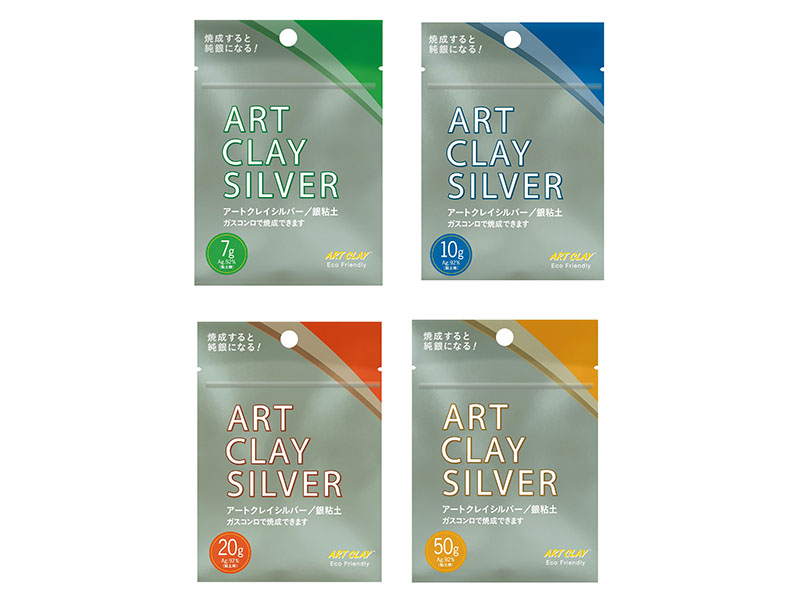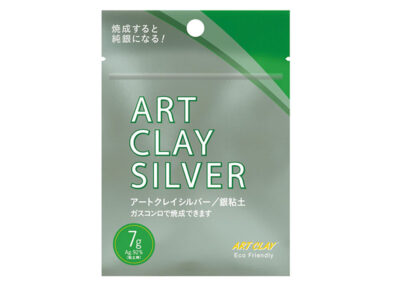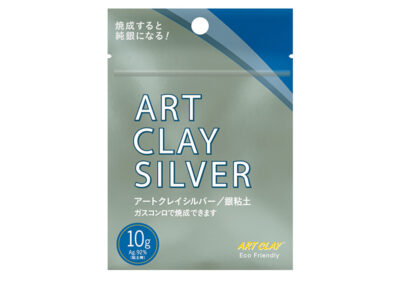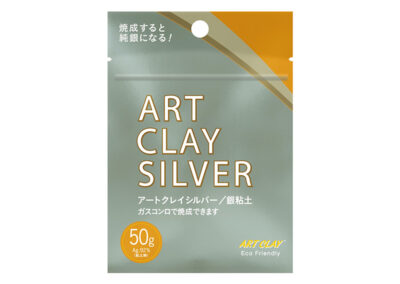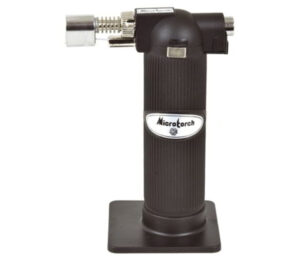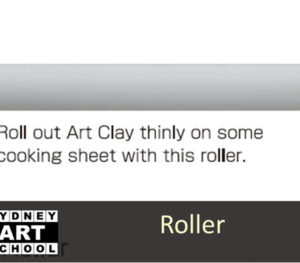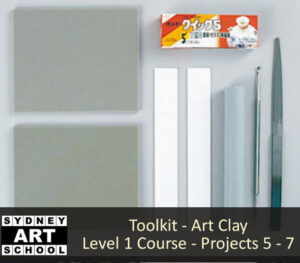What is A Precious Metal Clay?
A metal clay Silver combines metal powders with non-toxic binders and water. When kiln, torch or stove top fired, the binders burn away and the metal sinters – the clay is transformed into a solid piece of hand crafted silver jewelry. Typical metals used are silver, gold or alloys of copper.
What are the Main Brands of Metal Clay?
Art Clay Silver & PMC are two different brands of clay-like materials that shape easily, then amazingly fire into a pure metal object! They can be formed and worked just as you would clay.
Why Choose Art Clay Silver?
New Formula
The New Formula of Art Clay Silver combines the benefits of previous formulations
- Original Formula > Easy molding
- Slow Dry > Prolonged clay workability time (up to 4x)
- Low Fire > Fires at lower temperatures and can be torcj fired.
Highest Purity
Art Clay products are crafted through a patented process that delivers the highest purity available from any metal clay. Silver (99.9%) , copper (more than 99.5% copper), and gold (22K) – provides quality to match the uniqueness of the jewellery produced.
Lowest Shrinkage
Owing to subtle differences in the binder and suggested firing times, Art Clay Silver shrinks less than the PMC versions, approximately 8–10%.1 This makes it a good choice for creating sized designs, such as rings and earrings.
1. Wikipedia https://en.wikipedia.org/wiki/Metal_clay
Standards Compliant
Art Clay Silver is the only precious metal clay that is certified by the Arts & Creative Materials Institute (ACMI) to conform to international standard ASTM D 4236. It identifies art materilas that are safe to humans including children and have been certified in toxicological evaluation by a medical expert.
Broadest Range of Formulations
Art Clay Silver offers a range of formulations so the artist is freed to craft their vision with confidence in the quality and versatility of the material.
The main types are
- Clay Type
- Paste Type
- Syringe Type
- Art Clay 950
- Paper Type
- Gold
- Copper
Ease of Use
Art Clay fires at a low temperature in a short time! Allowing firing with a propane torch, or even on a gas stove top.
Types of Art Clay Silver
Clay Type
This type can be modeled in the same way as regular water-based clay. Once opened, it is susceptible to the air and must be kept moist in order to retain its pliability and workability. Use a container of water and a paintbrush to moisten any areas of the clay surface that begin to crack while working.
Paste Type
The only difference between Paste type and Clay type is the amount of water portion in the mixture.
Paste type comes in the consistency of melted ice cream and you should only transfer the amount needed from the jar to a small tray and dilute with water to create the desired thickness.
It is used in several ways:
- As a glue to join two pieces of dry or wet clay together.
- As a gap-filler for pits and cracks that appear in dried pieces.
- To attach silver findings (screw eyes, bailbacks, brooch findings, etc.) to dried or wet clay pieces.
- During firing, the normal contraction of the clay bonds the findings.
- When applied in separate layers onto organic forms such as leaves, dried flowers, paper-origami, etc, Paste type creates a perfect impression of the form.
Syringe Type
Art Clay Silver Syringe type is 5gm and 10gm of Art Clay Silver in a pre-loaded syringe. Syringe type comes packaged in three ways: with color-coded tips (blue, green and gray), each an increasingly larger diameter; a one tip (green nozzle) package; and packaged without any tips. Each of the tips is reusable and only needs to be purchased once. The diameter of each syringe nozzle is; Blue Nozzle: 0.41mm, Green Nozzle: 0.84mm, and Gray Nozzle: 1.19mm. The consistency of Syringe type is totally different from that of Paste type and it is not to be thought of as just paste in a syringe. Syringe type is thicker, more controllable and allows more workability. It is used in several ways:
- To decorate pieces, much like using cake decorating tips. Lines, filigree, faux cloisonné borders, and even hollow balls can be made with Syringe type.
- As a repair “glue” to fill cracks and gaps.
- To attach findings to wet or dry clay pieces.
Overlay Silver Paste
This Art Clay product is specifically formulated to bond to non-porous or glazed surfaces such as ceramic, porcelain, and glass. Overlay Silver Paste can be used in a variety of ways:
Paint directly, full strength, onto bisque, glazed porcelain or glass pieces.
Used in a technique called sgraffito, whereby a thin layer of Overlay paste is applied to the glazed porcelain or glass, allowed to dry, and then a pointed tool is used to scratch a design into the layer so that the porcelain or glass beneath appears, giving a stenciled look. This product is fired at 650℃ / 1202˚F for 30 minutes.

